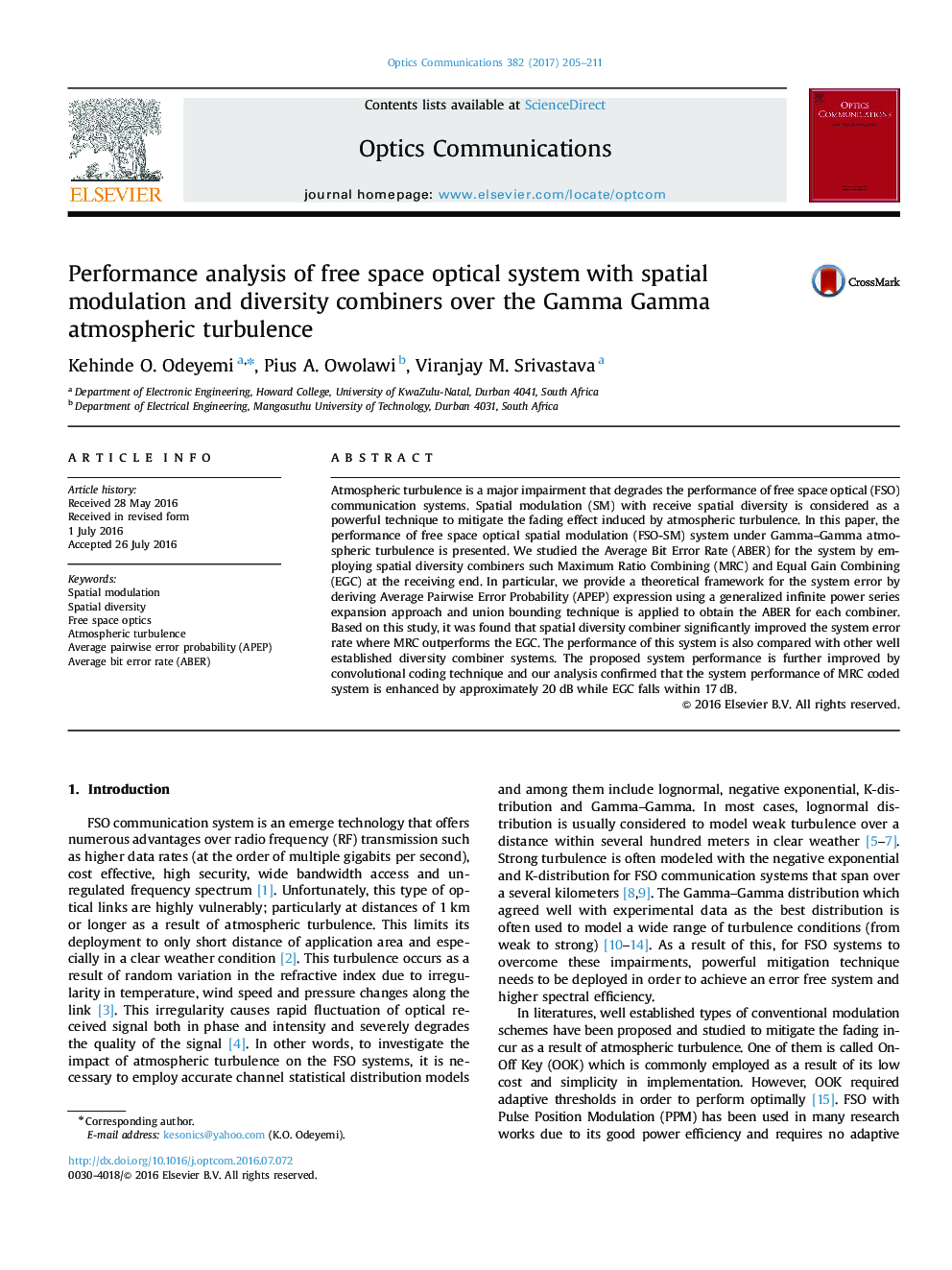| Article ID | Journal | Published Year | Pages | File Type |
|---|---|---|---|---|
| 7927312 | Optics Communications | 2017 | 7 Pages |
Abstract
Atmospheric turbulence is a major impairment that degrades the performance of free space optical (FSO) communication systems. Spatial modulation (SM) with receive spatial diversity is considered as a powerful technique to mitigate the fading effect induced by atmospheric turbulence. In this paper, the performance of free space optical spatial modulation (FSO-SM) system under Gamma-Gamma atmospheric turbulence is presented. We studied the Average Bit Error Rate (ABER) for the system by employing spatial diversity combiners such Maximum Ratio Combining (MRC) and Equal Gain Combining (EGC) at the receiving end. In particular, we provide a theoretical framework for the system error by deriving Average Pairwise Error Probability (APEP) expression using a generalized infinite power series expansion approach and union bounding technique is applied to obtain the ABER for each combiner. Based on this study, it was found that spatial diversity combiner significantly improved the system error rate where MRC outperforms the EGC. The performance of this system is also compared with other well established diversity combiner systems. The proposed system performance is further improved by convolutional coding technique and our analysis confirmed that the system performance of MRC coded system is enhanced by approximately 20Â dB while EGC falls within 17Â dB.
Related Topics
Physical Sciences and Engineering
Materials Science
Electronic, Optical and Magnetic Materials
Authors
Kehinde O. Odeyemi, Pius A. Owolawi, Viranjay M. Srivastava,
